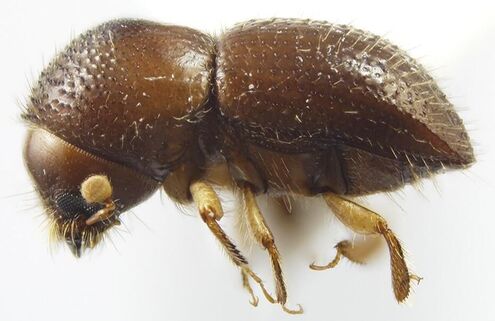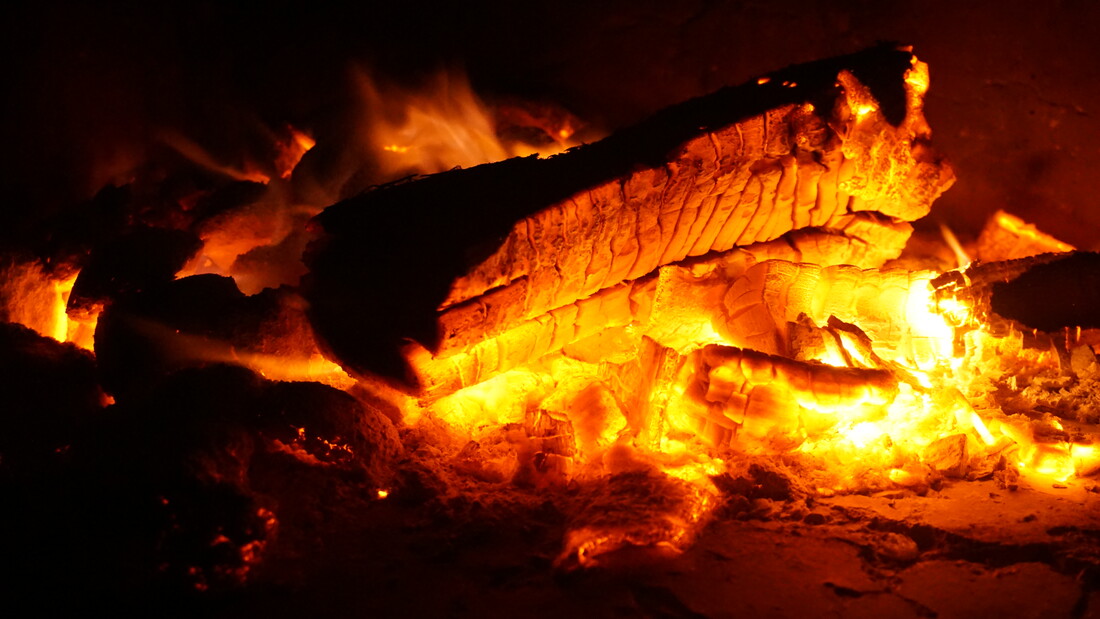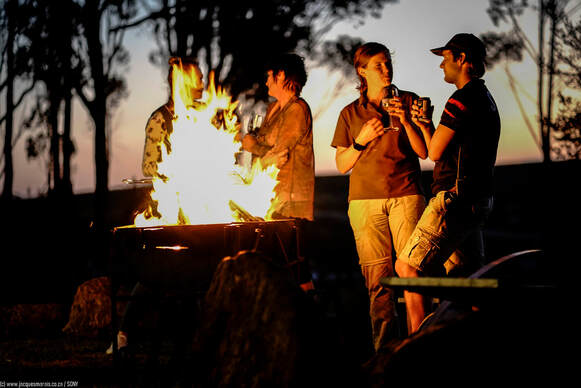|
The infestation of the shot hole borer beetle has spread to multiple places in Western Cape and poses a threat to indigenous trees throughout South Africa. Polyphagous Shot Hole Borer is a tiny beetle that feeds on living trees. It's difficult to see the beetle. The females are black in color and (1.8-2.5) mm long and males also small but brown and wingless. The males are 1.5-1.7 mm and are less common than females. The beetle needs breeding and feeding space and enters a tree through the bark, creating breeding and feeding lines, with a layer of spores of the fusarium fungus. The shot hole borer beetle has a symbiotic relationship with this fungus because it is the beetle's primary food source. To reproduce and eat fusarium fungus, the beetle digs tunnels deep within the infected tree. The beetle does not kill the tree but the fungus (Fusarium Euwallacea) does. The fungus spreads from the tunnel into the tree, obstructing the vascular system of the tree. This fungus is the main causes of tree wilting. The Shot Hole borer beetle is native to Southeast Asia. It arrived in South Africa in 2017 and has caused some environmental damage. It reproduces in both exotic and native tree species. Outside of its native habitat it appears to be much more aggressive. The symptoms of infected trees differ from one tree species to another, and there are numerous signs that a tree is infected. Some of these indicators could be sawdust collecting on the bark and around the base of the tree. Certain tree species may experience leaking of liquid and gum from beetle holes. Most people will not notice the problem until the tree dies. As a result, the wood from the dead infested tree must be processed to kill the beetle inside; otherwise, the surviving beetles will move to nearby trees and spread the infection. You have a few options for dealing with the dead wood. If possible, solarizing an infested wood pile and burn the wood right away. Alternatively, one can also chip the wood. We can't completely stop the infestation of shot hole borers, but we can treat and manage it to lessen its impact and spread. If you grow trees and observe tree wilting, try to determine whether the symptoms are caused by Shot Hole Borer. If a tree is heavily infested, it should be cut down and destroyed. If the main stem is unaffected, infested branches can be removed. Dump wood at a designated dumping site or inquire with the municipality. If you chip the wood finer than 5cm, you can make compost or burn it on-site. Note that some beetles will flee if the wood becomes hot or there is smoke so make sure to contain the burn area and burn at a high enough temperature. As we approach the festive season when we all like to make braais at our holiday destination, please do your part and DO NOT MOVE FIREWOOD around, especially if you live in an infested area. We recommend that you rather buy invasive firewood at your local holiday destination and thereby supporting the local rural economies and helping to reduce the spread of invasive vegetation and the shot hole borer beetle. Make sure that the wood that you buy is invasive and that it is locally obtained.
Note: All guests houses in the Grootvadersbosch Conservancy, including Cape Nature, do not allow external firewood to be brought in. Let us do everything we can to protect our forests and control the Shot Hole beetle infestation. References https://greenpop.org/polyphagous-shot-hole-borer-beetle/ https://www.fabinet.up.ac.za/pshb https://www.farmersweekly.co.za/crops/field-crops/protecting-south-africas-trees-from-the-shot-hole-borer/
0 Comments
Your comment will be posted after it is approved.
Leave a Reply. |
AuthorGVB Conservancy Staff Archives
May 2024
Categories |



 RSS Feed
RSS Feed






